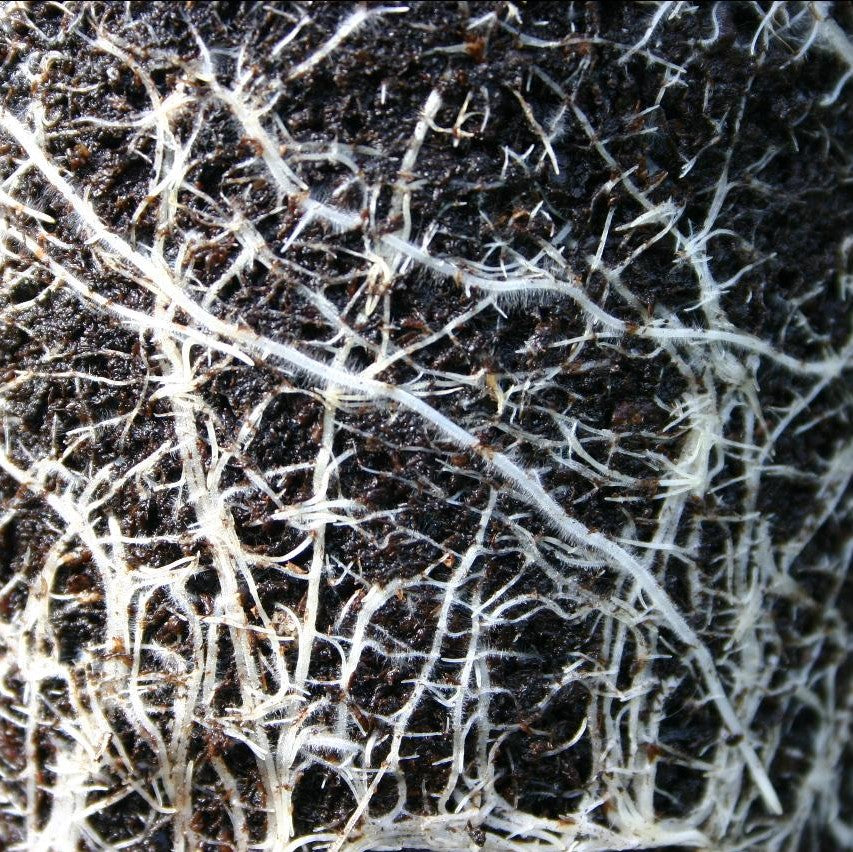How to Prep Your Garden For Healthy Root Growth
•Posted on March 15 2019

Any self-respecting gardener would tell you how important the roots of a plant are.
After all, just because you can't see them, doesn't mean that they aren't one of the main sources of your plants well-being.
Keeping roots healthy is a vital part of looking after your plants and this short guide should help you identify the difference between healthy and unhealthy roots, and how you can treat poor root health.
Why Do Roots Matter?
Roots exist to take in water and nutrients from the soil, essentially it's how the plant eats and drinks.
They also provide a sturdy foundation for the plant and, if it's grown outdoors, help it stay upright in the wind.
Maintaining a healthy root system is a key part in ensuring you have a healthy, happy-looking garden.
What Influences Root Health?

Healthy roots are a result of care and balanced nutrient intake.
Introducing phosphorus and potassium to your plants can usually help them grow new roots while strengthening and encouraging the growth of existing roots so they develop at a desirable rate.
Keeping your plant's roots healthy is a vital part of ensuring normal growth.
Unhealthy roots can often be caused by over or underwatering, improper usage of fertilizer, and too much competition between roots.
When you overwater a plant, you cause the soil to fill with water and reduce the likelihood of sufficient oxygen being absorbed.
When you underwater, roots may dry out, shrink and are unable to transfer key nutrients from the soil to your plant.
What Should My Plant's Roots Look Like?
Healthy roots are usually white or tan in color. Healthy roots are plenty in number and appear long enough to hold the soil in the shape of a pot, should you remove the plant.
If you can see any root tips, they should be noticeably white and look fairly strong.
Keep in mind that certain nutrients can stain your roots. This is not an indicator of poor health if all roots are the same color.

Roots that crumble to the touch and are brown in color are generally a sign that your plant is unhealthy.
If the roots are small and unable to maintain the shape of the soil when you remove them from the pot, this may not be a sign of poor root health, but may instead be an indicator that the plants are not mature.
Diseases Associated With Poor Root Health and How to Treat Them
Root rot is one of the most common diseases associated with poor root health and is a result of a certain type of fungus attacking the roots.
Unfortunately, root rot can be a very serious problem that often results in plants having to be disposed of.
If some of the roots are showing signs of being healthy, the plant may survive if you re-pot it in fresh soil.
You can also revive a plant suffering from root rot by running the roots under water and removing any slimy portions of the roots in addition to cutting off infected roots with scissors before replanting.

Whether you're a veteran gardener or a first-time novice, your garden can benefit from our wide range of organic, eco-friendly, water-soluble fertilizers - abundant in key nutrients that are widely acknowledged to improve root health.
You can shop some of these below and prep your garden to encourage healthy root growth for seasons to come!
Related Posts:
Comments
0 Comments
Leave a Comment